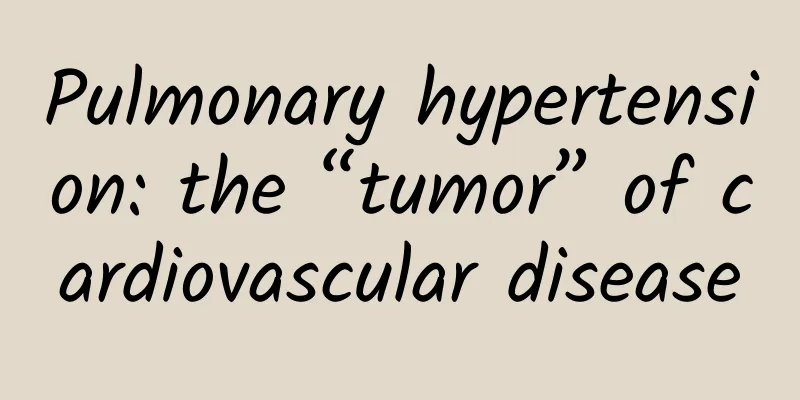Pulmonary hypertension: the “tumor” of cardiovascular disease

|
Sources of pulmonary hypertension In 1981, an incident in Spain caused by toxic rapeseed oil-induced pulmonary hypertension resulted in 20,000 victims. In May of that year, an 8-year-old boy became the first death in the incident. For this reason, the Spanish Society of Pulmonary Hypertension recommended in 2012 that May 5 of each year be designated as "World Pulmonary Hypertension Day" to raise awareness of pulmonary hypertension and promote the improvement of prevention and treatment. The establishment of "World Pulmonary Hypertension Day" aims to improve the quality of life of 25 million patients with pulmonary hypertension worldwide and prolong their life expectancy. In the past, pulmonary hypertension was considered a rare disease, or even a rare disease. In recent years, with the improvement of diagnostic technology, scholars have found that pulmonary hypertension is not uncommon. It is currently considered the third most common cardiovascular disease after coronary heart disease and hypertension. In addition, pulmonary hypertension is an extremely malignant disease. The median survival time of untreated patients is only 2.8 years, and 75% of patients die within 5 years of diagnosis. The average survival time after the onset of symptoms is 1.9 years, and the average survival time after the onset of right heart failure is less than 1 year. Therefore, it is clinically called a "disease more malignant than many malignant tumors." Definition of pulmonary hypertension Pulmonary hypertension (PH) refers to a clinical and pathophysiological syndrome caused by changes in pulmonary vascular structure or function due to a variety of heterogeneous diseases (etiologies) and different pathogenesis, resulting in increased pulmonary vascular resistance and pulmonary artery pressure, which can then develop into right heart failure or even death. Its specific hemodynamic definition refers to the mean pulmonary artery pressure (mPAP) ≥ 25 mmHg measured by right heart catheterization (RHC) at sea level, while the mPAP of a normal adult at rest is about 14 mmHg, and its upper limit does not exceed 20 mmHg. Simply put, pulmonary hypertension is high blood pressure that occurs in the pulmonary arteries. When the pulmonary artery pressure is too high, the heart must work harder to pump blood. As the pulmonary artery pressure increases, the patient's heart burden increases, eventually leading to right heart failure and even death. Clinically, PH is divided into 5 categories: (1) Pulmonary arterial hypertension (PAH); (2) PH caused by left heart disease; (3) PH caused by lung disease and/or hypoxia; (4) PH caused by chronic thromboembolic pulmonary hypertension (CTEPH) and/or other pulmonary artery obstructive lesions; (5) PH caused by unknown and/or multiple factors. symptom Common daily manifestations of PAH patients include: shortness of breath after exercise, palpitations, syncope on exertion, Raynaud's phenomenon, arthritis or joint pain, rash, hepatitis, loud snoring, daytime sleepiness, morning headache, dry cough or coughing up blood, chest pain, anorexia, swelling of arms or legs, lips or fingers turning purple or blue (clubbing), etc. Patients with pulmonary hypertension have blue or purple lips due to lack of oxygen, so they are also called "blue lips". Blue lips are also an internationally recognized publicity symbol for pulmonary hypertension. diagnosis Pulmonary hypertension is often misdiagnosed, sometimes for years, and the condition is already severe when it is diagnosed. The key to treating pulmonary hypertension is early diagnosis and early treatment. To diagnose whether it is pulmonary hypertension, the hospital generally needs to do the following tests: chest X-ray, electrocardiogram, lung function test, blood test and immunology test, echocardiogram, high-resolution CT scan. Pulmonary hypertension has a wide range of causes and lacks specific clinical symptoms. It is generally difficult to diagnose based on symptoms and signs alone. Cardiac ultrasound is one of the important examination methods for screening PH. It is simple, easy, cheap, and non-invasive. Therefore, American experts have recommended Doppler echocardiography as the most appropriate initial examination method for patients with pulmonary hypertension. However, right cardiac catheterization is the standard method for diagnosing pulmonary hypertension, assessing the severity of hemodynamic damage, and testing vascular reactivity. It is also the only examination method for diagnosing pulmonary hypertension, especially for patients with obvious symptoms who may need pulmonary hypertension-specific treatment (also known as targeted therapy). treat At present, targeted drugs are the first choice for treating pulmonary hypertension, and the common treatment method is the combination of 2-3 pathways. In the past decade, with the progress of targeted drugs, the survival rate and quality of life of patients with pulmonary hypertension have been significantly improved. Early and timely diagnosis and treatment can stabilize the condition of 20% of patients or even cure them. Therefore, given the poor treatment effect of late-stage pulmonary hypertension, its early identification and treatment are crucial. There are generally no obvious symptoms in the early stages of pulmonary hypertension. As the disease worsens, the symptoms will become more and more obvious. If dyspnea and decreased exercise tolerance occur, timely intervention treatment is required. The earlier pulmonary hypertension is treated, the greater the benefit. If no intervention is performed in the early stages, functional damage is likely to occur over time, such as ventricular remodeling and right heart failure. Therefore, it is recommended that everyone actively conduct early intervention treatment. To learn more about cardiovascular health, please follow Dr. Ma’s Heart Lectures Original article, no reproduction without authorization |
<<: Regarding XBB, beware of these 6 cognitive misunderstandings!
>>: Fragment warning! Orthokeratology contact lenses are also afraid of "cold"
Recommend
Breast engorgement on the third day of normal delivery
Female breasts are not only a symbol of beauty, b...
What does clotrimazole discharge?
When using clotrimazole vaginal tablets, a small ...
Water leaks out when using Baicao Fuyan suppository
Baicao Fuyanqing Suppository is a Chinese herbal ...
How many months of pregnancy does it take for the belly button to protrude?
We all know that the belly button is the scar lef...
Can pregnant women use alcohol to wipe their skin?
Alcohol is a very common substance in our daily l...
Normal progesterone levels during pregnancy
During pregnancy, many women pay more attention t...
In addition to the commonly mentioned "hypertension", there is also secondary hypertension. Have you heard of it?
With the changes in diet and lifestyle, hypertens...
After taking Diane, my menstrual period became darker and less
Why does my menstrual period become dark and less...
My period is 7 days late.
Women's menstrual period is generally relativ...
Popular Science丨Don’t let allergies get to you in spring!
Spend the long winter Spring is here, and flowers...
What causes women to not get pregnant?
For women, having a cute baby is everyone's w...
Urethra pain during fetal movement in late pregnancy
Pregnant women often feel that their urethra is c...
Premenstrual insomnia
Many women are prone to insomnia before menstruat...
How to use female contraceptive test strips
Pregnancy generally brings two effects to women. ...
Can applying pearl powder, lemon, cucumber, etc. on the face whiten your skin? Beware of "bad face"! The correct whitening method is...
Author: Meng Yao, Ph.D., Doctor of Medicine, Zhon...









